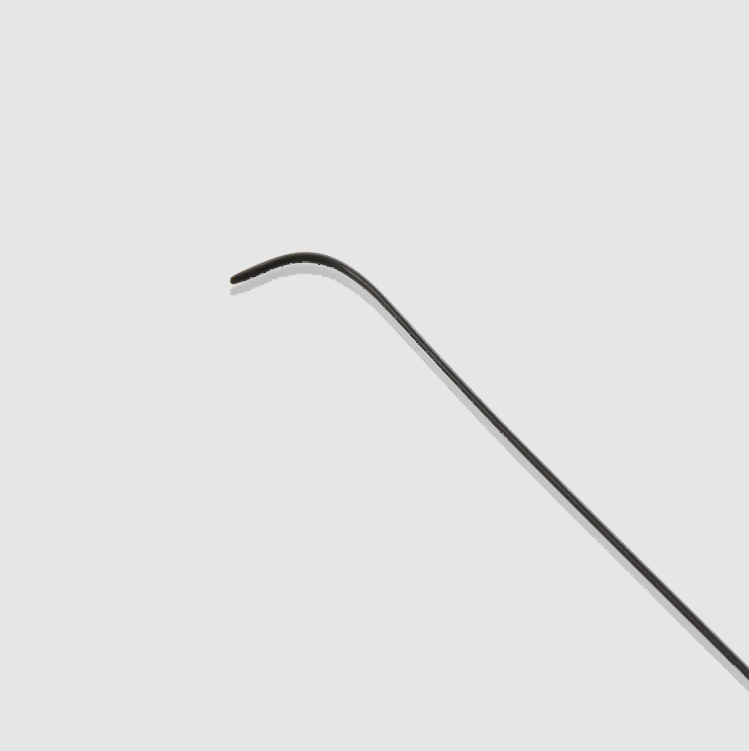In the realm of modern medicine, precision and efficiency are paramount. One of the tools that has significantly improved the success rates of various medical procedures is the hydrophilic guide wire. This innovative device, characterized by its special coating and exceptional maneuverability, has become indispensable in fields such as cardiology, interventional radiology, urology, and gastroenterology.

Introduction to Hydrophilic Guide Wire
What is a Hydrophilic Guide Wire?
A hydrophilic guide wire is a slender, flexible wire used in minimally invasive medical procedures. It is coated with a hydrophilic substance that attracts and retains water, which makes the wire slippery when it comes into contact with bodily fluids. This unique property allows the guide wire to glide through narrow and tortuous blood vessels with minimal friction, reducing the risk of damaging vessel walls and improving procedural outcomes.
How Does the Hydrophilic Coating Work?
The hydrophilic coating on the guide wire is designed to activate swiftly upon contact with bodily fluids. This activation creates a lubricious surface, facilitating the wire’s advancement through vessels. The reduction in friction not only enhances the wire’s navigability but also minimizes trauma to the vessel walls, promoting patient safety and procedural efficiency.
Structure and Design Features
Hydrophilic guide wires are built with a balance of flexibility and support. This combination provides exceptional maneuverability, enabling healthcare professionals to navigate complex vascular structures with ease and precision. The guide wire is also equipped with a radiopaque marker at the distal end, offering excellent visibility under fluoroscopy. This feature ensures accurate positioning during procedures and reduces the risk of misplacement. Additionally, the tapered tip design of the guide wire facilitates smooth entry into vessels, minimizing trauma to delicate tissues.
How to Use a Hydrophilic Guide Wire
Preparation and Handling
Proper preparation and handling of the hydrophilic guide wire are crucial for its effective use. Before use, the guide wire should be thoroughly examined for any damage or irregularities. Ensuring that the guide wire is intact and in optimal condition helps prevent complications during the procedure.
Activation of the Hydrophilic Coating
Activating the hydrophilic coating is a simple yet essential step. The guide wire needs to be wetted with saline or another suitable fluid to activate the coating. This process makes the wire slippery and ready for insertion into the vascular system. It is important to maintain the hydration of the coating throughout the procedure to ensure continuous lubricity.
Navigation and Placement
Once the hydrophilic coating is activated, the guide wire can be carefully inserted into the vessel. Using fluoroscopic guidance, the healthcare professional navigates the wire through the vascular pathways to reach the target area. The high flexibility and support of the guide wire allow for precise control and maneuverability, even in challenging anatomical structures. The radiopaque marker at the distal end aids in confirming the correct placement of the wire under imaging.
The Important Role of Hydrophilic Guide Wires
Enhancing Procedural Success
Hydrophilic guide wires play a pivotal role in enhancing the success rates of various medical procedures. Their ability to navigate through narrow and tortuous vessels with minimal friction reduces the risk of vessel damage and procedural complications. This is particularly important in delicate procedures such as angioplasty and stent placement, where precision is critical.
Improving Patient Safety
Patient safety is a top priority in any medical procedure. The smooth, lubricious surface of the hydrophilic guide wire minimizes trauma to the vessel walls, reducing the likelihood of vascular injury. The tapered tip design further enhances safety by facilitating gentle entry into vessels. These features collectively contribute to a safer and more comfortable experience for patients.
Versatility Across Medical Specialties
The versatility of hydrophilic guidewires spans multiple medical specialties, making them an indispensable tool in a variety of procedures. In cardiology, they aid in the placement of stents, balloons, and catheters during angioplasty and other cardiac interventions. In interventional radiology, they guide catheters for procedures such as embolization, biopsy, and drainage. The same can be said for urology, where they aid in the placement of ureteral stents and access to the urethra for diagnostic and therapeutic purposes. In gastroenterology, they guide the bile and pancreatic ducts for procedures such as ERCP (endoscopic retrograde cholangiopancreatography) and stent placement.
Key Features of Hydrophilic Guide Wires
Premium Hydrophilic Coating
The premium hydrophilic coating on the guide wire is one of its most significant features. This coating activates quickly upon contact with bodily fluids, creating a slippery surface that facilitates smooth and effortless advancement through vessels. The reduction in friction not only improves the wire’s navigability but also minimizes trauma to the vessel walls.
High Flexibility and Support
Hydrophilic guide wires are designed with a balance of flexibility and support. This combination allows for exceptional maneuverability, enabling healthcare professionals to navigate complex vascular structures with ease and accuracy. The high flexibility of the wire ensures that it can adapt to the intricate anatomy of the vessels, while the support provides stability during the procedure.
Radiopaque Marker for Enhanced Visibility
The inclusion of a radiopaque marker at the distal end of the guide wire is a critical feature for precise positioning. This marker enhances the visibility of the wire under fluoroscopy, allowing healthcare professionals to accurately track its progress and ensure correct placement. The improved visibility reduces the risk of misplacement and contributes to the overall success of the procedure.
Multiple Length Options
Hydrophilic guide wires are available in various lengths to accommodate diverse procedural requirements. This versatility makes them adaptable to a wide range of clinical scenarios, allowing healthcare professionals to choose the appropriate length for each specific procedure. Whether navigating long or short vascular pathways, the availability of multiple length options ensures optimal performance.
Smooth Transition and Tapered Tip Design
The tapered tip design of the hydrophilic guide wire facilitates a smooth transition into vessels. This design minimizes trauma to delicate tissues, promoting patient safety and comfort. The smooth entry provided by the tapered tip reduces the likelihood of vascular injury and enhances the overall efficiency of the procedure.

Applications in Various Medical Specialties
Cardiology
In cardiology, hydrophilic guide wires are essential tools for procedures such as angioplasty and stent placement. Their ability to navigate through narrow and winding coronary arteries with minimal friction improves procedural outcomes and reduces the risk of complications. The high flexibility and support of the guide wire allow for precise control during these delicate interventions.
Interventional Radiology
Interventional radiologists rely on hydrophilic guide wires for a variety of procedures, including embolization, biopsy, and drainage of fluid collections. The lubricious surface of the guide wire facilitates smooth advancement through vascular pathways, enabling accurate placement of catheters and other devices. The radiopaque marker enhances visibility under fluoroscopy, ensuring precise positioning.
Urology
In urology, hydrophilic guide wires assist in the placement of ureteral stents and accessing the urinary tract for diagnostic and therapeutic purposes. The high flexibility and support of the guide wire allow for easy navigation through the urinary system, reducing the risk of injury to delicate tissues. The hydrophilic coating ensures smooth passage through narrow and tortuous pathways.
Gastroenterology
Hydrophilic guide wires are invaluable tools in gastroenterology, particularly for procedures involving the biliary and pancreatic ducts. They facilitate navigation through these complex ductal systems for procedures such as ERCP and stent placement. The lubricious surface of the guide wire minimizes friction, reducing the risk of ductal injury and improving procedural success rates.
Conclusion
The hydrophilic guide wire represents a significant advancement in medical technology, offering a combination of flexibility, support, and lubricity that enhances the success and safety of various medical procedures. With its premium hydrophilic coating, radiopaque marker, multiple length options, and tapered tip design, this guide wire has become an indispensable tool across multiple medical specialties. Whether in cardiology, interventional radiology, urology, or gastroenterology, the hydrophilic guide wire continues to revolutionize minimally invasive procedures, improving patient outcomes and advancing the field of medicine. Tianjin Demax Medical Technology Co., Ltd., a leading supplier of hydrophilic guide wires, continues to innovate and provide high-quality products that meet the evolving needs of healthcare professionals worldwide.